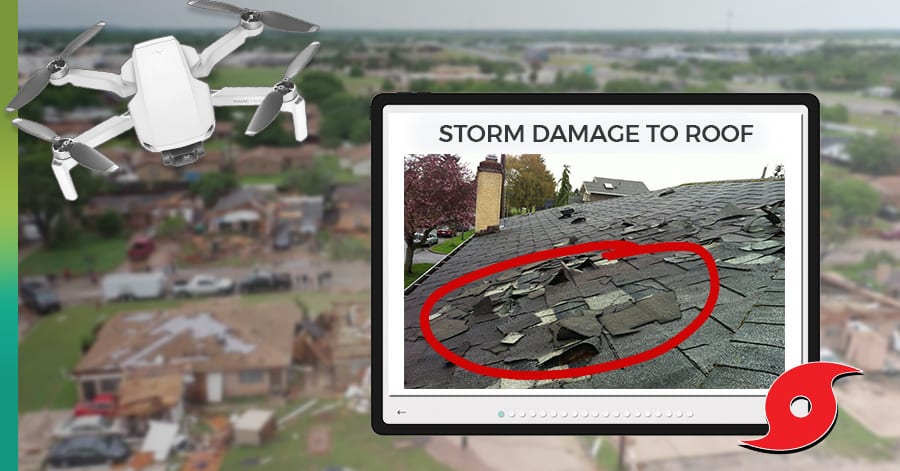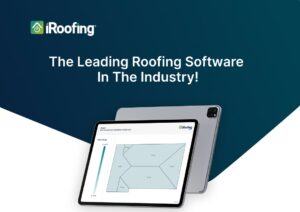Roofing Contractors, Storm Roofers, Storm Contractors & Independent Insurance Adjusters, Take Note:
The 2020 Atlantic hurricane season begins June 1st and runs all the way through November 30th. Hurricanes aren’t a factor for western states, but if you serve areas up and down the east coast of the United States and around the Gulf of Mexico, you know that strong tropical storms and hurricanes result in massive demand on roofing contractors and insurance adjusters for storm remediation.
Despite some big hits, like Hurricane Irma in September 2017 and Hurricane Michael in October 2018, the eastern U.S. has been relatively spared in the years since the country’s most active season ever – 2005. That year, there were 27 named storms including some of the most notorious in recent memory— Hurricane Wilma, Hurricane Harvey, and Hurricane Katrina. (The average number of named storms annually is twelve.)
So, why might 2020 be especially worrisome for the tens of millions of property owners in the collective cone of uncertainty? We concluded that there are six unique conditions that should have you and residents in your community on high alert… and guess what? Four of the reasons are connected to COVID-19!

1) The Forecasts
The National Oceanic & Atmospheric Administration (NOAA) is the final word on storm predictions and most local meteorologists take their cues from it. “Seasonal atmospheric conditions reveal a recipe for an active Atlantic hurricane season this year,” said Neil Jacobs, Ph.D. and acting NOAA administrator.
For 2020, NOAA is predicting up to 19 named storms (winds of 39 mph or higher). Up to 10 could become hurricanes packing winds of 74 mph or higher, and, as many as 6 could become major category 3, 4 or 5 hurricanes with winds of at least 111 mph or higher.
More storms also means that you need to prepare your business so that you’re ready to serve your area safely and efficiently.
2) The Changing Climate
No matter where you stand on the issue of climate change and whether or not man contributes to it, doesn’t matter. If the climate is warming (which it is) purely from natural earthly cycles, those warmer temperatures ensure greater geothermal disturbances.
Compounding the matter this year are especially warmer sea surface temperatures in the Atlantic and Caribbean, and more active monsoon conditions off the coast of west Africa which fuel hurricane development here in our neck of the woods!
3) Neglected Home Maintenance
Shortly after COVID-19 hit North America, the National Roofing Contractors Association (NRCA) backed a survey finding that 58.9% of contractors experienced a slowdown in normal bid activity. 45.2% reported having already suffered job cancellations back in April. What these survey results indicate is that fewer property owners are maintaining or repairing their roofs either due to concerns over human contact or a move toward cautious spending as the economy began to precipitously decline. When property owners neglect home maintenance, the likelihood of their properties incurring expensive losses during extreme weather increases greatly. As the 2020 hurricane season arrives, social distancing is very much in play and the economy is only beginning to struggle back to its feet.

iRoofing – Instant, Unlimited Measurements & Estimates
By having the iRoofing mobile app, you’re able to produce instant, unlimited measurement reports. You can also generate instant estimates from those takeoffs, never having to rely on expensive 3rd party measurement services.
In the aftermath of a hurricane, you can also document the damage inflicted on your clients’ roofs. Only with iRoofing can you compare and contrast pre-storm overhead imagery with post-storm damage images captured by your drone which will integrate seamlessly with the iRoofing app.
Back at your office, from your home, or from wherever you can connect to the Internet, you can use the full features of iRoofing to measure and estimate roof replacements and roof repair work. Storm contractors can survey an entire neighborhood in order to play a proactive role in reaching out to people at addresses which were impacted by hurricane winds and rain.
4) Suspended Municipal Services due to COVID-19
In many places, municipal services have been reduced or put on hold. Only essential safety aspects of local government have stayed active. We may see evidence of this in city and county parks usually manicured but now beginning to look overgrown. In many densely populated neighborhoods where tree-pruning is routinely necessary to protect power lines, phone lines, and citizen safety, little has been done. This significantly increases the likelihood that flying debris during strong winds can damage property and roofs are especially susceptible! Roadside debris pick-up from residential and commercial maintenance and construction sites is behind schedule in many places due to COVID-19, posing added hazards in high winds.
5) Work-from-Home & Unemployment due to COVID-19
Single family homes are not always the safest place to hunker down during a terrible storm. Yet, if the hurricane season gets gnarly early on, we could see conditions where most people are still at home, either working remotely, furloughed, or applying for jobs.

6) Pressure on Evacuation Centers due to Social Distancing
Property owners in impacted areas may have more difficulty than usual finding shelter in designated facilities due to social distancing measures. If severe weather arrives early in the season, careful examination of people admitted into shelters will also take place and people with symptoms of the virus will be placed in separate quarters, further complicating admissions at these storm shelters. The result of tightened restrictions in facilities may keep more people riding out the storms in their homes or places of business. While this should not directly affect roofing contractors, it will pose added dangers to property owners.
On a more positive note, COVID-19 has helped shore up the infrastructure of major roadways, such as the 408 and I-4 corridors in central Florida. Light traffic volumes over the extended period of self-quarantining has sped up the process of planned highway improvements throughout the eastern seaboard which will make safe evacuations from hurricane-stricken areas easier and faster.
iRoofing – Benefits Beyond Measure
In addition to DIY measurements and estimates, you can perform roof inspection reports with iRoofing. Using the imagery accessible through the app, including high-resolution Clearoof™ aerial images, indicate the exact areas of roof damage and produce a professional roof inspection report, suitable for insurance documentation. It’s ideal for independent insurance adjusters as well as storm contractors!
Other features of iRoofing include a realistic Roof Visualizer; a fully integrated digital products catalog; and awesome sales presentation tools that support social distancing. Everything can be done from afar without having to physically meet the property owner or manager. There’s nothing else like iRoofing to give you a step up on your competition!
iRoofing is The perfect independent insurance adjuster's software solution
During hurricane season, independent insurance adjusters are busier than accountants on April 15th. What can relieve their stress is an insurance adjusters’ software solution like iRoofing. No longer do they have to be dependent on 3rd party roof report services. These gallant pencil-pushers can now do roof damage assessment, professional roof inspections, and estimates themselves.
Roofing Pros Provide a Vital Service. Thank You!
Be ready for hurricane season both as a property owner yourself and as a contractor whose services are always critical in the aftermath of severe weather.
















